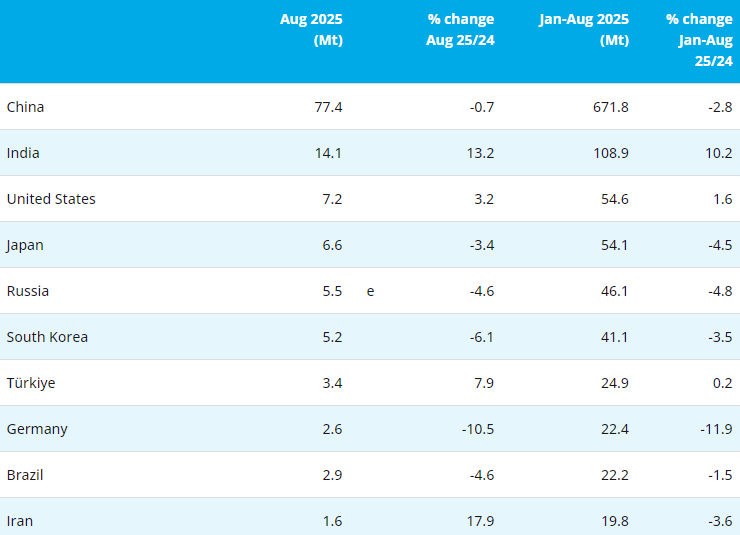[Ferro-Alloys.com] Korea’s steel industry warns paid carbon allowances will raise costs and electricity rates
As the government prepares the fourth emissions trading scheme allocation plan to be applied for the next five years starting next year, word that it will cut the free allocation ratio and raise the paid allocation ratio has the steel industry on edge. The steel industry is one of the sectors that emit a lot of carbon, so a higher paid ratio increases the expense burden. The steel industry also uses a lot of electricity, and if the paid ratio rises, generation costs go up, making it more likely that power companies will raise electricity rates.
According to the industry on the 14th, the government plans to hold a comprehensive forum on the 2035 Nationally Determined Contribution (NDC) this month, then review and reflect opinions before finalizing the fourth emissions transaction scheme. The government plans to submit the finalized plan to the United Nations Framework Convention on Climate Change (UNFCCC) before the 30th Conference of the Parties (COP30) is held in Brazil in Nov.
The emissions trading scheme is a system in which the government allocates greenhouse gas emissions limits to corporations and allows greenhouse gases to be emitted only within those limits. The total quantity of allowances is set every five years by the Ministry of Climate, Energy and Environment, taking into account domestic and external conditions. After that, allowances are divided by industry, then allocated to each corporation after receiving applications for emissions by company. Within the pre-allocated amount, greenhouse gases can be emitted free of charge.
Corporations that emit fewer greenhouse gases than their pre-allocated amount can sell their remaining allowances to other corporations. Conversely, corporations that emit greenhouse gases in excess of their pre-allocated amount must buy allowances. The government decided to cut the pre-allocated allowances by about 22% compared with the third phase (2021–2025), and to reduce the pre-allocated allowances for the “power generation institutional sector,” which consists of power plants and electricity suppliers, and the “non-power generation institutional sector,” which includes all other businesses, by 33% and 14.9%, respectively.
The steel industry fears that if the pre-allocated allowances are reduced, allowance prices will rise. The current allowance price is about 8,000–9,000 won per ton (t). The government projects that if the paid allocation ratio is raised from the current 10% to 50% by 2030, the carbon allowance price will rise to 61,000 won pert.
The government also hinted at the possibility of gradually expanding the paid ratio in the power generation institutional sector from the current 10% to 50% by 2030. According to the Korea Institute for Industrial Economics & Trade (KIET), in that case, electricity rates would rise by about 9.8 won per kilowatt-hour (kWh). This is because power generators must also buy carbon allowances, raising generation costs.
The steel industry worries that with industrial electricity rates up 60% over the past three years, it could lose industrial competitiveness if allowance prices rise and electricity rates increase further. POSCO spent 313.9 billion won on power and water costs in the first half of this year, up 20% from a year earlier. Hyundai Steel also pays more than 1 trillion won a year in electricity rates.
An industry official said, “The combined shortage of allowances for POSCO and Hyundai Steel is about 20 million t, so if allowance prices rise sixfold from now, the annual burden will increase by 1.2 trillion won. On top of that, even a 1 won increase per kWh in electricity rates adds 10 billion won to the burden.”
- [Editor:tianyawei]



 Save
Save Print
Print Daily News
Daily News Research
Research Magazine
Magazine Company Database
Company Database Customized Database
Customized Database Conferences
Conferences Advertisement
Advertisement Trade
Trade









 Online inquiry
Online inquiry Contact
Contact

Tell Us What You Think